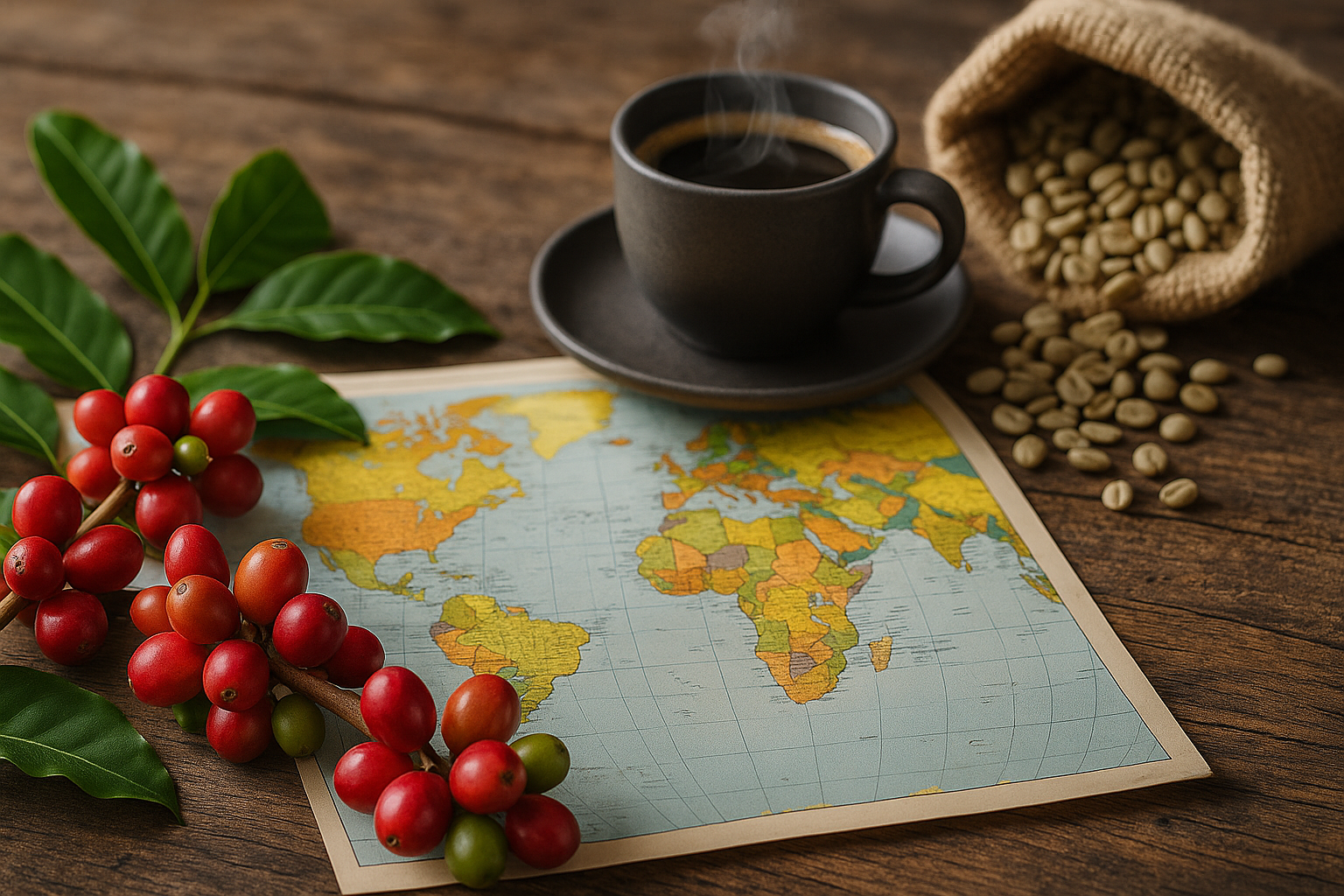“Terroir” is a term borrowed from the wine world, but it applies just as meaningfully to coffee. It refers to how the natural environment—including soil, climate, altitude, and local ecosystems—affects the flavor of the coffee bean.
For baristas, understanding terroir means recognizing how beans from different regions bring unique characteristics to the cup.
This knowledge helps with brew recommendations, flavor pairings, and explaining a coffee’s profile to curious customers.
Why Climate Matters
Climate is one of the most powerful elements of terroir. Rainfall patterns, average temperature, humidity, and seasonal variation all influence how coffee grows, matures, and tastes.
Beans grown in cooler high-altitude areas typically mature more slowly. This slow growth leads to more complex sugars, resulting in sweet, bright, and aromatic coffees.
In contrast, coffees grown in hotter lowland areas tend to develop faster, often with a bolder body but less complexity. These conditions are more common in regions where Robusta is grown.
Altitude and Its Impact on Flavor
Altitude is closely related to temperature. Higher elevations mean cooler temperatures, which slow down the ripening process of coffee cherries.
This extended development gives beans more time to absorb nutrients and sugars. The result? More acidity, floral notes, and fruit-forward profiles—traits often associated with premium Arabica beans.
Coffee grown at lower altitudes typically has lower acidity, a heavier mouthfeel, and earthier, more grounded flavors. These beans are sometimes considered less refined, but they can shine in espresso or milk-based drinks.
Soil Composition and Minerality
Different soils impart different minerals and nutrients to coffee plants. Volcanic soil, for example, is rich in potassium and phosphorus, which promote healthy growth and bean density.
Coffees from regions with volcanic soil—like parts of Guatemala, Colombia, and Indonesia—often have a rich, balanced flavor with hints of chocolate, spice, or fruit.
Sandy or loamy soils might produce lighter, more delicate flavors. Soil management and conservation also play a role in maintaining coffee quality over time.
Sunlight and Shade: The Role of Microclimates
Microclimates are small, unique environments within a farm or region. Shade-grown coffee is often part of a biodiverse system that slows down cherry development and prevents heat stress.
This slower maturation encourages higher sugar content and more nuanced flavors. Shade-grown coffees are also more sustainable, as they protect local ecosystems and bird populations.
Sun-grown coffee, while higher-yielding, can lead to faster maturation and simpler flavor profiles. Baristas who understand this distinction can guide customers toward the right brew for their taste.
How Processing Methods Interact With Terroir
The flavor of coffee is not only shaped by where it grows but also how it’s processed after harvest. Even beans from the same farm can taste radically different depending on whether they’re washed, natural, or honey-processed.
Terroir lays the foundation, but processing enhances or shifts certain elements. For example, a washed Ethiopian coffee might showcase its floral terroir more clearly than a naturally processed one from the same region.
Understanding this balance between nature and human technique helps baristas explain the story behind a cup of coffee, giving customers more than just a drink—it gives them a journey.
Regional Flavor Profiles Around the World
Certain regions have developed strong reputations based on their terroir. Here’s a breakdown of some key areas and what baristas can expect from their beans:
Ethiopia: High elevation, wild varieties, and heirloom genetics produce intensely floral, citrusy, and tea-like coffees—especially in Yirgacheffe and Sidamo.
Colombia: Volcanic soil and microclimates create sweet, balanced coffees with chocolate, red fruit, and citrus notes.
Brazil: Lower altitudes and sun-grown systems result in nutty, chocolatey profiles with low acidity—excellent for espresso blends.
Kenya: Bright, wine-like acidity with blackcurrant and berry notes, thanks to fertile soil and high altitudes.
Indonesia: Earthy, spicy, and full-bodied coffees, often processed using traditional wet-hulling, which complements their deep terroir.
The Barista’s Role in Honoring Terroir
As a barista, you become the final step in a long chain that begins with soil, rain, and sunlight. Every detail of your brew method can either highlight or mute the natural flavors created by terroir.
This means selecting the right grind size, water temperature, and brew method based on the origin and expected profile of the bean. It also means educating customers who want to understand why their coffee tastes the way it does.
You can deepen your craft by tasting coffees side by side and comparing how origin, processing, and roast interact. Take notes, talk with roasters, and keep refining your palate.
Terroir and the Future of Coffee
Climate change is already shifting the boundaries of where coffee can grow. As traditional high-elevation areas become warmer, terroir is being redefined, and new regions are emerging.
Baristas who stay informed about these changes can better support sustainable sourcing and make informed recommendations. Supporting farms that protect their land and adapt responsibly helps preserve flavor diversity for future generations.
Coffee is not just about caffeine or comfort—it’s a connection to geography, history, and craft. Terroir is a beautiful way to understand and respect that connection.

Artur is a coffee enthusiast and content creator passionate about barista techniques and coffee culture. With a sharp eye for detail and a love for learning, he shares practical tips, brewing guides, and gear insights to help readers elevate their coffee experience — from home brewers to aspiring professionals.
